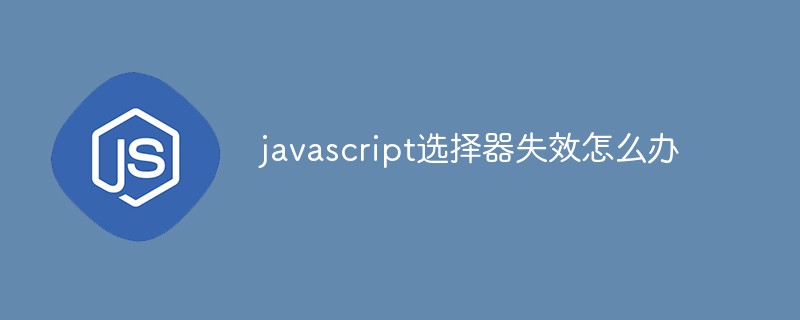 Web Front-end
Web Front-end CSS Tutorial
CSS Tutorial From beginner to proficient: Master the skills of using is and where selectors
From beginner to proficient: Master the skills of using is and where selectors
From entry to proficiency: Master the skills of using is and where selectors
Introduction:
In the process of data processing and analysis, selectors ( selector) is a very important tool. Through selectors, we can extract the required data from the data set according to specific conditions. This article will introduce the usage skills of is and where selectors to help readers quickly master the powerful functions of these two selectors.
1. Use of is selector
The is selector is a basic selector that allows us to filter the data set based on given conditions. The following is an example of using the is selector:
import pandas as pd
# 创建示例数据集
data = {'姓名': ['张三', '李四', '王五', '赵六'],
'年龄': [18, 21, 22, 20],
'性别': ['男', '女', '男', '女']}
df = pd.DataFrame(data)
# 使用is选择器
selected_data = df[df['年龄'] > 20]
print(selected_data)Output results:
姓名 年龄 性别 1 李四 21 女 2 王五 22 男
In the above example, we used the is selector to filter data with an age greater than 20. It can be seen that only Li Si and Wang Wu are older than 20, so the final result only contains their information.
2. Use of where selector
The where selector is another commonly used selector, which allows us to filter and replace the data set based on given conditions. The following is an example of using the where selector:
import pandas as pd
# 创建示例数据集
data = {'姓名': ['张三', '李四', '王五', '赵六'],
'年龄': [18, 21, 22, 20],
'性别': ['男', '女', '男', '女']}
df = pd.DataFrame(data)
# 使用where选择器
df.where(df['性别'] == '男', '未知', inplace=True)
print(df)Output result:
姓名 年龄 性别 0 张三 18 男 1 未知 21 未知 2 王五 22 男 3 未知 20 未知
In the above example, we used the where selector to replace the data with male gender. It can be seen that the original male data has not changed, but the female data has been replaced with 'unknown'. Among them, the inplace=True parameter indicates modification on the original data set.
3. Advanced usage techniques of is and where selectors
In addition to the above basic usage methods, is and where selectors also have some advanced usage techniques to meet more complex needs.
- Multi-condition filtering
You can combine multiple conditions for filtering through logical operators (such as and, or). The sample code is as follows:
import pandas as pd
# 创建示例数据集
data = {'姓名': ['张三', '李四', '王五', '赵六'],
'年龄': [18, 21, 22, 20],
'性别': ['男', '女', '男', '女']}
df = pd.DataFrame(data)
# 使用多条件筛选
selected_data = df[(df['年龄'] > 20) & (df['性别'] == '男')]
print(selected_data)Output results:
姓名 年龄 性别 2 王五 22 男
In the above example, we used multi-condition filtering to filter out data with an age greater than 20 and a male gender.
- Filtering based on data type
When processing a data set, sometimes it is necessary to filter out columns or rows of specific data types. The sample code is as follows:
import pandas as pd
# 创建示例数据集
data = {'姓名': ['张三', '李四', '王五', '赵六'],
'年龄': [18, 21, 22, 20],
'性别': ['男', '女', '男', '女']}
df = pd.DataFrame(data)
# 筛选字符串类型的列
string_columns = df.select_dtypes(include='object')
print(string_columns)Output result:
姓名 性别 0 张三 男 1 李四 女 2 王五 男 3 赵六 女
In the above example, we used the select_dtypes function to filter out columns whose data type is string.
Conclusion:
Through the introduction of this article, we have learned the basic usage of is and where selectors, and mastered some advanced usage skills. Selectors are indispensable tools in data processing and analysis. Mastering these skills will greatly improve our work efficiency. I hope that after studying this article, readers can flexibly use the is and where selectors to better process and analyze data.
The above is the detailed content of From beginner to proficient: Master the skills of using is and where selectors. For more information, please follow other related articles on the PHP Chinese website!
 css中id选择符的标识是什么Sep 22, 2022 pm 03:57 PM
css中id选择符的标识是什么Sep 22, 2022 pm 03:57 PM在css中,id选择符的标识是“#”,可以为标有特定id属性值的HTML元素指定特定的样式,语法结构“#ID值 {属性 : 属性值;}”。ID属性在整个页面中是唯一不可重复的;ID属性值不要以数字开头,数字开头的ID在Mozilla/Firefox浏览器中不起作用。
 使用:nth-child(n+3)伪类选择器选择位置大于等于3的子元素的样式Nov 20, 2023 am 11:20 AM
使用:nth-child(n+3)伪类选择器选择位置大于等于3的子元素的样式Nov 20, 2023 am 11:20 AM使用:nth-child(n+3)伪类选择器选择位置大于等于3的子元素的样式,具体代码示例如下:HTML代码:<divid="container"><divclass="item">第一个子元素</div><divclass="item"&
 Laravel 集合中的 Where 方法实用指南Mar 10, 2024 pm 04:36 PM
Laravel 集合中的 Where 方法实用指南Mar 10, 2024 pm 04:36 PMLaravel集合中的Where方法实用指南在Laravel框架的开发过程中,集合(Collection)是一个非常有用的数据结构,它提供了丰富的方法来操作数据。其中,Where方法是一个常用的筛选方法,能够根据指定条件来过滤集合中的元素。本文将介绍Laravel集合中Where方法的使用,通过具体的代码示例来演示其用法。1.基本用法Where方法的
 css伪选择器学习之伪类选择器解析Aug 03, 2022 am 11:26 AM
css伪选择器学习之伪类选择器解析Aug 03, 2022 am 11:26 AM在之前的文章《css伪选择器学习之伪元素选择器解析》中,我们学习了伪元素选择器,而今天我们详细了解一下伪类选择器,希望对大家有所帮助!
 Laravel 集合中如何使用 Where 方法Mar 10, 2024 pm 10:21 PM
Laravel 集合中如何使用 Where 方法Mar 10, 2024 pm 10:21 PMLaravel集合中如何使用Where方法Laravel是一个流行的PHP框架,它提供了丰富的功能和工具,方便开发者快速构建应用程序。其中,集合(Collection)是Laravel中一个非常实用和强大的数据结构,开发者可以使用集合对数据进行各种操作,如过滤、映射、排序等。在集合中,Where方法是一个常用的方法,用于根据指定的条件过滤集
 javascript选择器失效怎么办Feb 10, 2023 am 10:15 AM
javascript选择器失效怎么办Feb 10, 2023 am 10:15 AMjavascript选择器失效是因为代码不规范导致的,其解决办法:1、把引入的JS代码去掉,ID选择器方法即可有效;2、在引入“jquery.js”之前引入指定JS代码即可。
 从入门到精通:掌握is与where选择器的使用技巧Sep 08, 2023 am 09:15 AM
从入门到精通:掌握is与where选择器的使用技巧Sep 08, 2023 am 09:15 AM从入门到精通:掌握is与where选择器的使用技巧引言:在进行数据处理和分析的过程中,选择器(selector)是一项非常重要的工具。通过选择器,我们可以按照特定的条件从数据集中提取所需的数据。本文将介绍is和where选择器的使用技巧,帮助读者快速掌握这两个选择器的强大功能。一、is选择器的使用is选择器是一种基本的选择器,它允许我们根据给定条件对数据集进
 css中的选择器包括超文本标记选择器吗Sep 01, 2022 pm 05:25 PM
css中的选择器包括超文本标记选择器吗Sep 01, 2022 pm 05:25 PM不包括。css选择器有:1、标签选择器,是通过HTML页面的元素名定位具体HTML元素;2、类选择器,是通过HTML元素的class属性的值定位具体HTML元素;3、ID选择器,是通过HTML元素的id属性的值定位具体HTML元素;4、通配符选择器“*”,可以指代所有类型的标签元素,包括自定义元素;5、属性选择器,是通过HTML元素已经存在属性名或属性值来定位具体HTML元素。


Hot AI Tools

Undresser.AI Undress
AI-powered app for creating realistic nude photos

AI Clothes Remover
Online AI tool for removing clothes from photos.

Undress AI Tool
Undress images for free

Clothoff.io
AI clothes remover

AI Hentai Generator
Generate AI Hentai for free.

Hot Article

Hot Tools

Zend Studio 13.0.1
Powerful PHP integrated development environment

SublimeText3 English version
Recommended: Win version, supports code prompts!

Dreamweaver Mac version
Visual web development tools

ZendStudio 13.5.1 Mac
Powerful PHP integrated development environment

Dreamweaver CS6
Visual web development tools




